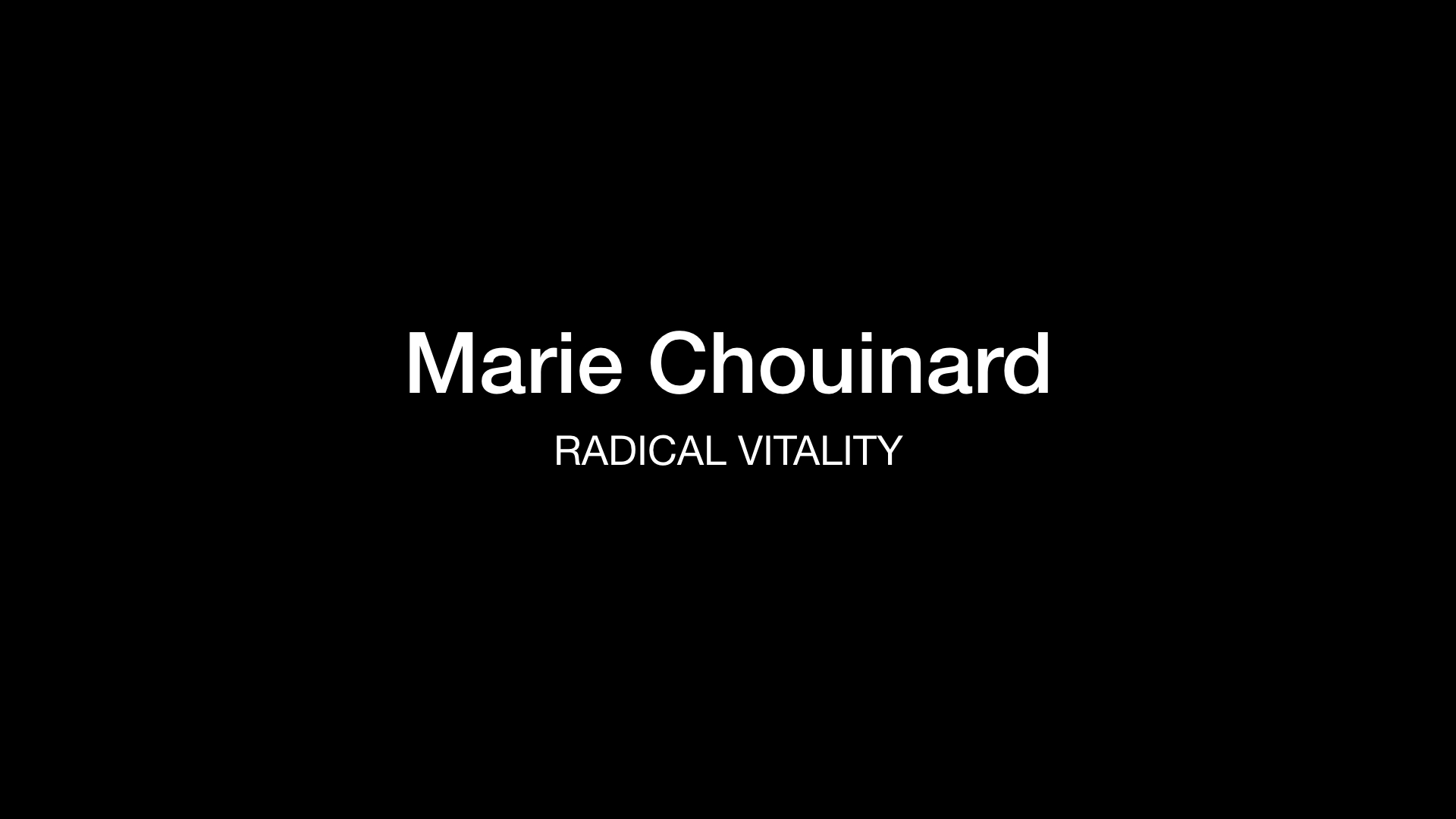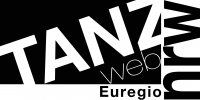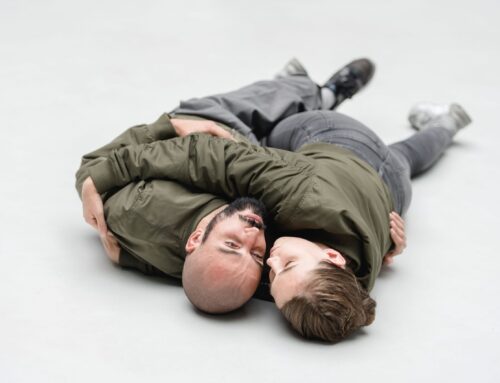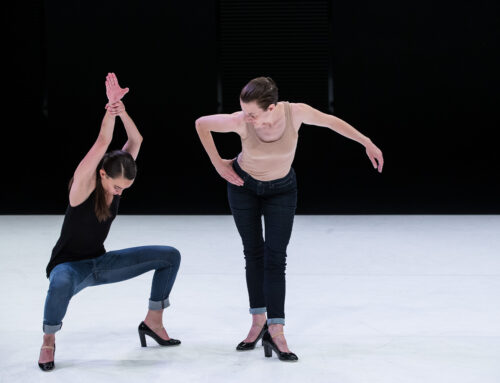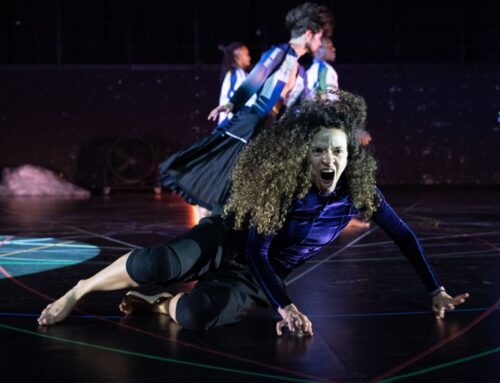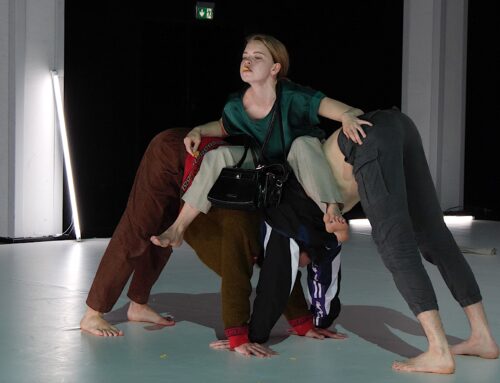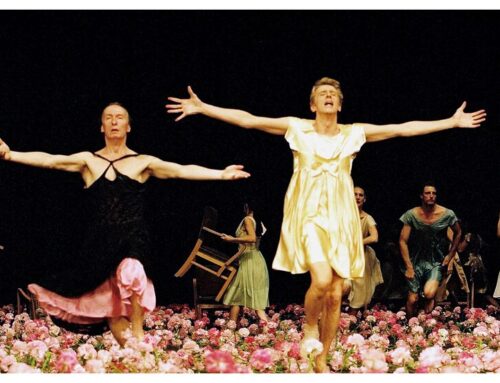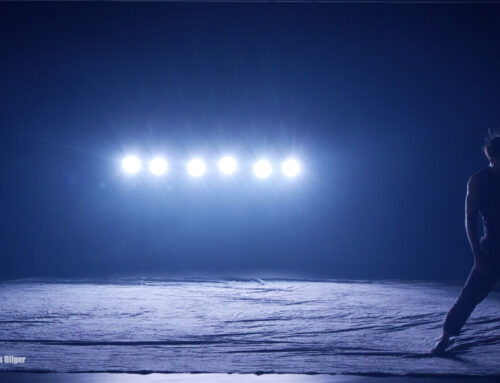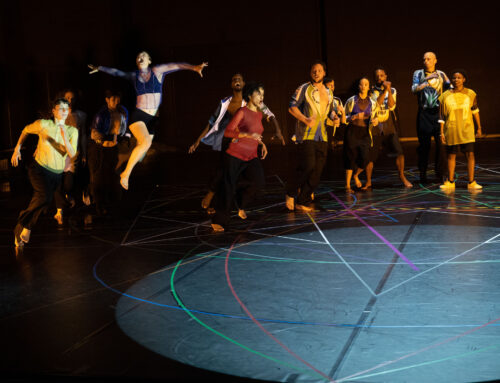schrit_tmacher justDANCE! Opening
Perfection would not be alive
in Heerlen with Marie Chouinard’s „Radical Vitality“
review by Melanie Suchy
translated by Karoline Strys
Instead of a big bash, 2023 Schrittmacher Festival began with a series of smaller parties. Marie Chouinard from Montréal, Canada, was actually supposed to present her performance „Radical Vitality“ with her company already back in 2020 – a work that marked her fortieth anniversary as choreographer. Radical was exactly what hit the world back then in March, and what happened to the cultural scene and anything else as well. Cancellations, plans were thrown overboard. Vitality, in turn, was struggled for. For a long time. Now the dancers are back on stage, the audience is sitting in front of them. The piece is indeed a testimony to a quite radical vitality, liveliness, vividness, a lust for life, even love lust and eye candy. But: it is not a piece.
„Radical Vitality“ titles a sequence of eighteen short and very short scenes. It is best not to know this in advance and just let it run without counting. Somehow everything seems to fit, how one thing follows the other and as a whole results in a kind of summary, mostly one or two dancers appear per performance, the nucleus of stage dance works. Perhaps this enhances – in the best sense – the cheekiness with which the choreographer has always played on good taste. She hints at elegance, which the dancers naturally provide, the ballet, the baroque beauty, the straight, upright, the neat arms. But splash, as if a stone hit the water surface reflecting the skillfully beautiful, the body undulates and bulges and stretches elsewhere. It always has something liberating to it and yet it is strictly formed, composed. From a master.
The scenes derive from fifteen choreographies by Marie Chouinard up to the year 2018. The oldest, one suspects while watching, is No. 5, „Petite danse sans nom“ from 1980. A dancer appears from the left, Paige Culley in a little dress, in the left hand holding a water glass like a trophy, in the right hand a tin bucket. She stops, puts it down, drinks, drinks up, stands wide-legged over the bucket. Pisses, it is also audible, moves the feet side by side again, carries the bucket and glass away, as if in triumph, almost a bit Pina-bausch, this Ha! on her face.
Statements
As such the dancers seem to be working off a task in the few minutes they have. But Chouinard, born in 1955, does not otherwise set any gaudy Ah!-Oh!-Iiih! punch lines. Thus, despite the spontaneous applauses, the evening avoids functioning too clearly as a number show. Except for the little bell, the „Royal Bell“ from 2008’s „Orpheus and Eurydice,“ which Carol Prieur rings in her hand and then tucks it into her golden underwear. Belly and ribcage bulge, dent, choke until the little bell is on the tongue.
This is a touch of silliness, just like the smooching attack from „Chorale“ (2003), in which a man on a platform shouts „ho ho ho“ like an American Santa Clause and completely unmoved, like a sculpture, lets the loudly smacking and licking of the female visitor wash over him. The latter stalks away afterwards totally high or as if blinded, her eyes directed to the sky.
Sex and sound
Bodies make sounds. Also in the process. In this Chouinard compilation, this is recognizable as a recurring theme in her dances. Basically, it is always Orpheus and Eurydice, it is always opera, la petite mort, desire, singing, seeing, singing, silencing.
Breathing, gasping, sighing, whooping, squealing, screeching are choreographed by Chouinard with the bodies, the lungs, arms and voices. Also crying. The latter in a duet with laughter (from „The Golden Mean (Live)“), in which a man and a woman bully each other, tug at each other, push each other, pinch each other, Paige Culley and Luigi Luna. The respective „victim“ howls, the attacker laughs. In fluent alternation. But then he squats heavily on her chest as she lies: And she laughs. Ha! The pairing up is not that simple or the togetherness of couples is not decipherable. What is torment, what is pleasure?
Languages of love
Chouinard never becomes vulgar. She deceives the banal with comic-like strokes. Applying this she exaggerates and bends, twists, spreads and bends, flutters and stumbles the scenes. Her dancers are also clowns. The radical vitality lies, in fact, in the nonetheless. And not in reaching perfection but to turn it comically, not to know what is coming, and yet to dance. And to love that.
This becomes impressive in another duet from „The Golden Mean (Live)“ from 2010, the penultimate number. A female dancer strides decently and at a majestic pace, a little goddess of courtly ballet with four faces all around her head; everything is a front to her. This head jerks machine-like to the right and left, the wig tassels flying. While the other dancer tries to grasp the Great, the Invisible, throwing up her legs, standing on half point, stretching her arms, yet half-heartedly, somehow baggy, as if she was wearing old clothes in which she finds neither herself nor the Great Beauty. „Tell me,“ she cries, „is it really matter?“
Twice toward the end, Marie Chouinard lets a group march up (also from „The Golden Mean (Live)“). But not in order to multiply the power that characterizes her company, backed up by Louis Dufort’s reverberating electronic noise and instrumental music. Rather, the crowd of dancers wear fake faces on their heads, large photographs of, first, white-haired people, then wide-eyed babies, lounging and standing on chairs, then crawling on all fours up to the stage ramp and staring into the audience. If they were able to stare. They are only images. Reminiscent of the past and the future. Cute, flat, yet disturbing. No fizz, no buzz. Over and out.
